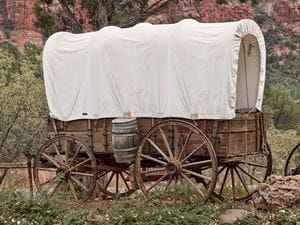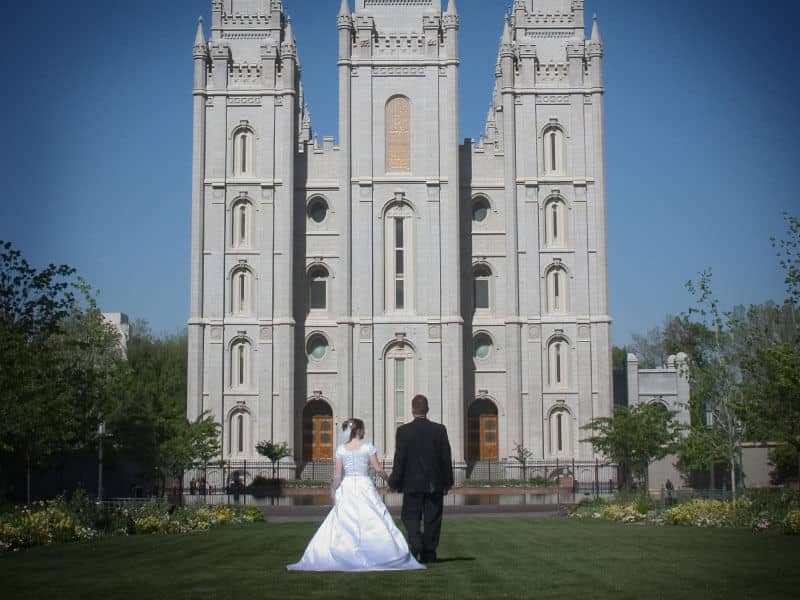
Never heard of Pioneer Day? You’re not alone. This Mormon celebration is only an official holiday in the state of Utah, but has a fascinating story that’s an important part of American history.
Celebrated on July 24th of each year, this holiday isn’t limited to Utah, but is observed as a special occasion everywhere in the world where Mormon communities are located.
For the members of the Church of Jesus Christ of Latter-Day Saints, also known as Mormons, Pioneer Day marks the anniversary of when the first Mormon pioneers—143 men, 3 women, and 2 children—arrived at the Great Salt Lake Valley, led by Brigham Young. For Utah at large, this day also commemorates eeryone who emigrated to the Salt Lake Valley during the pioneer era, hence the holiday’s name.
Although Pioneer is a happy time, similar to July 4th in theme, it has its roots, as many holidays do, in decidedly somber events.
The history of the Mormons is a troubled one. When Brigham Young arrived at the Salt Lake Valley, he declared it to be their destination, having seen the place in a vision, and these pioneers set about building a community from raw materials at hand. After Young’s group arrived in July of 1847, a further two thousand trickled in by the end of the year. A monument and state park were later erected at this location in remembrance of Young’s prophetic declaration.
The Mormons’ path to their promised valley, however, was fraught with the tragedy of religious harassment.
Mormonism was founded around 1830 by a man named Joseph Smith, who claimed to have been visited by an angel named Moroni, who gave Smith a set of golden plates. These plates contained records of the 10 lost tribes of Israel, who, according to the plates, had migrated to America. This linked America to the Bible in an unprecedented way, giving a new meaning to the term “under God.”
This proved attractive to many, and Smith was able to convert multitudes, gathering them together into communities he called “cities of Zion,” where they could hide from the disasters of the last days. Smith sent missionaries out from these settlements to make more converts, causing the number of Mormons—called Saints, at this time—rose into the tens of thousands.
But as those numbers continued to climb, anti-Mormon sentiment began to sweep through nearby communities, and the Mormons were driven away from their communities again and again. Some of this anger from surrounding communities stemmed from theological differences—traditional Christian pastors sometimes felt that Smith’s teachings were dangerous or demonic. Mostly, though, this anger came from the fear of Mormon political power as their numbers grew.
Eventually, these conflicts came to a head when Smith attempted to defend one of his settlements through armed conflict, drawing the ire of the state’s governor, who had Smith arrested. Smith was later killed by an armed mob which stormed the jail in which he was being held.
His passing, however, only served to energize the Mormon community, and still under the threat of death from surrounding, non-Mormon communities, they gathered their belongings and began to forge a path west to find a new home.
They became true pioneers, enduring an 18-month slog through the uncharted American West, driving through the bitter cold in their covered wagons, moving almost 1,300 miles. Hundreds died along the way of illnesses and starvation and exposure. For the most part, there was no trail where the Mormons went—in order to avoid conflict with other pioneers, they made their own path, led by Brigham Young—Smith’s successor.
When they finally arrived, Young was too sick to walk, but sat up in his bed and declared the place which would later be christened as Utah to be the “right place.” The Mormons had come home.
This tale of hardship and homecoming left a legacy amongst the Mormons that continues to this day in the form of Pioneer Day.
This holiday was first celebrated in 1849, when the Nauvoo Bass Band commemorated the second anniversary of the Mormons’ entry into Utah. Interrupted by a conflict with federal troops, the holiday wasn’t celebrated again until 1862, but has been going strong ever since.
Today, Mormons all over the world celebrate Pioneer Day by holding parades, fireworks displays, concerts, and reenactments of the western trek made by their ancestors. Gordon B. Hinkley, 15th president of the Mormon Church, summed up the spirit of Pioneer Day well at one celebration.
“Let us remember with gratitude and reverent respect those who have gone before us, who paid so dear a price in laying the foundation for that which we enjoy this day.”
Pioneer Day is also known as Days of ’47 in Utah, and is accompanied by a few main events. The Days of ’47 Parade is a three-hour event held in Salt Lake City, beginning at 9 am on July 24th. It includes famous floats, live music, high school marching bands, and a variety of other performances.
The Days of ’47 Rodeo is another major Pioneer Day event, and includes spectacles like steer wrestling, barrel racing, and bull riding, and is televised by the CBS Sports Network.
Finally, the Days of ’47 Concert is a huge musical event that features the Mormon Tabernacle Choir, as well as various award-winning guest artists.
Pioneer Day isn’t just a day to revel and remember, however—it is also a day to plan for the future. Church leaders remind all Mormons to retain the pioneering spirit which has borne aloft the Mormon community since its inception.
On this day, Mormon youth are reminded look up to the admirable qualities seen in the Mormon pioneers of the 1800s, so that they might emulate these qualities, forging their own paths in a world that may not always be hospitable to their beliefs.
Whatever you may personally believe, those original Mormon pioneers helped to carve out and shape an important part of our nation, laying the groundwork for a unique and thriving modern-day culture.

